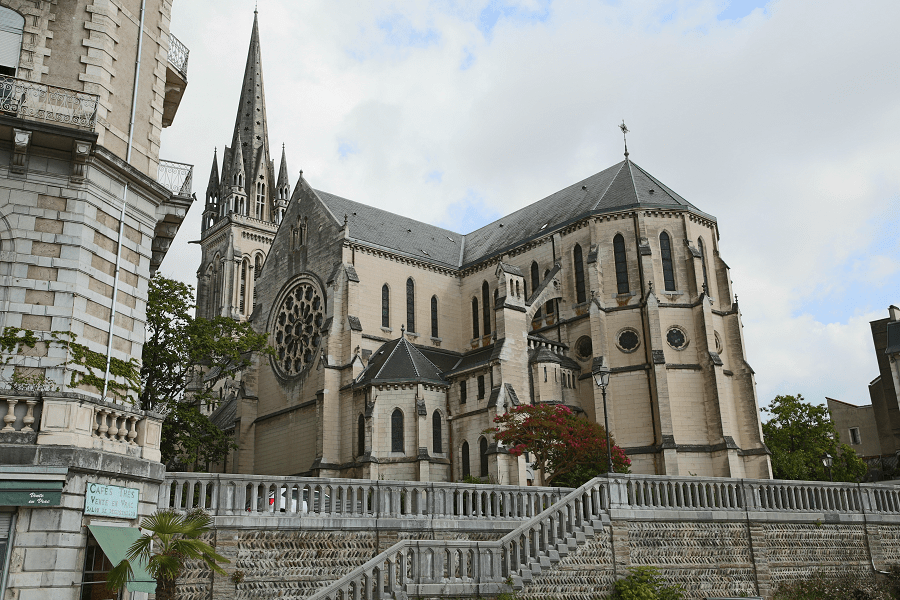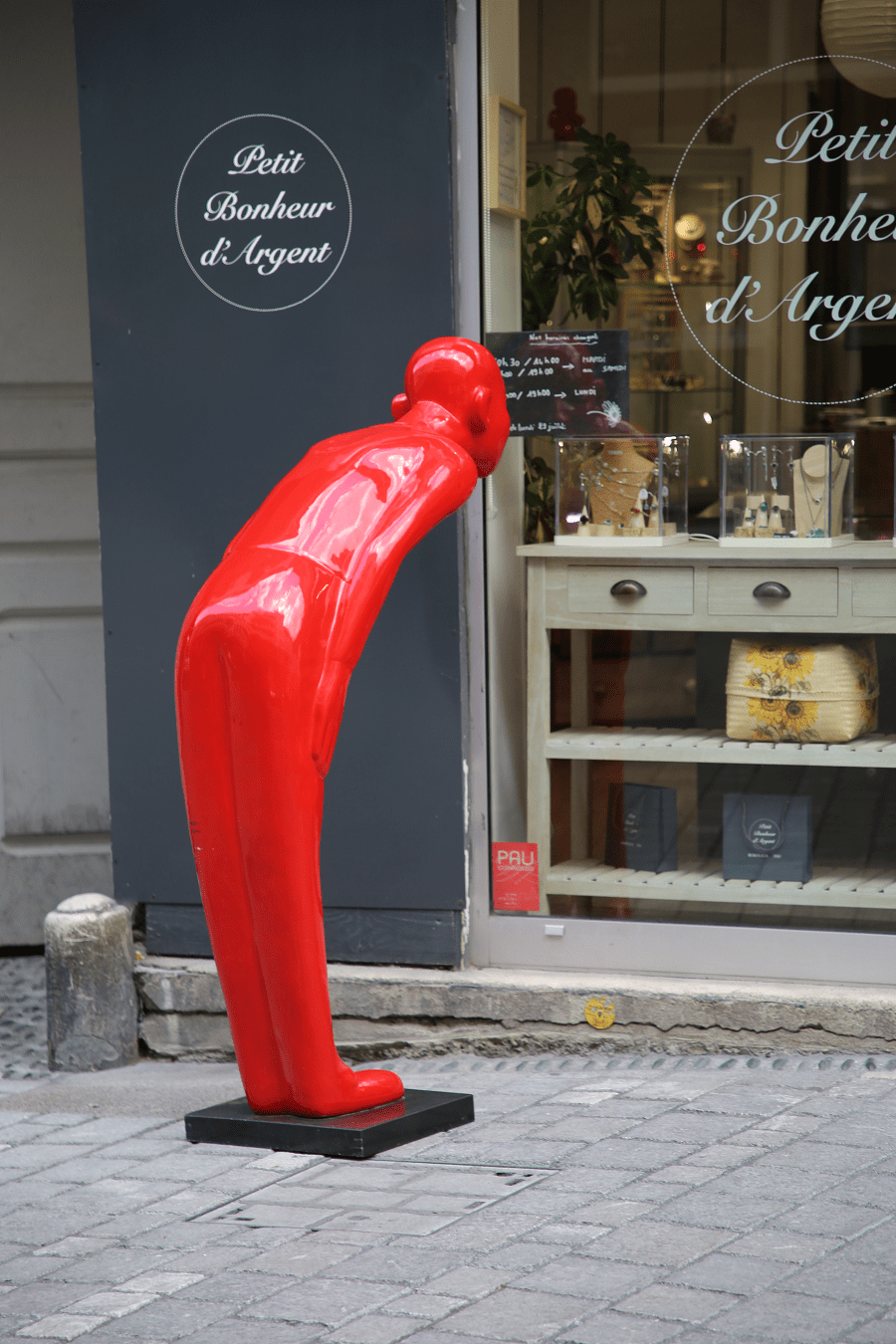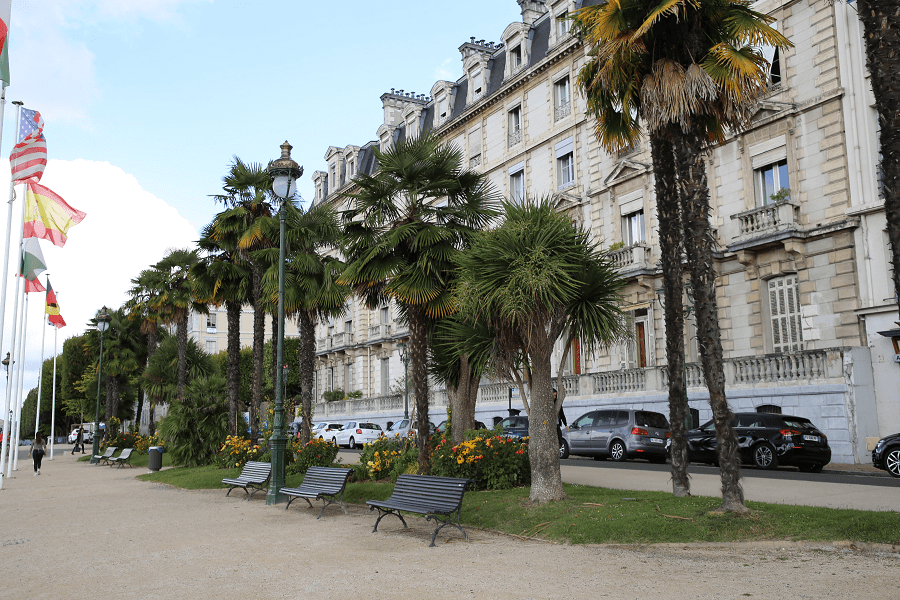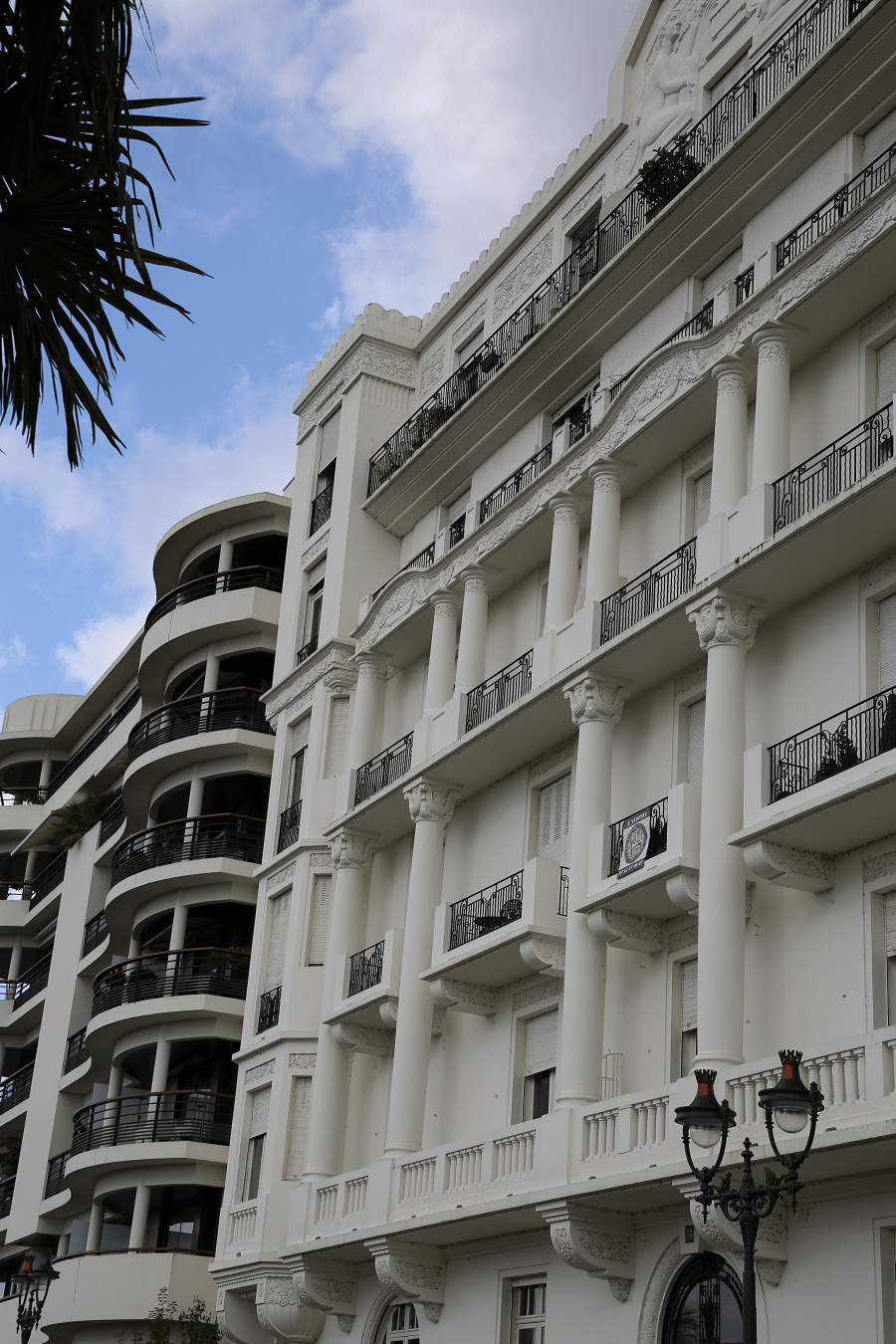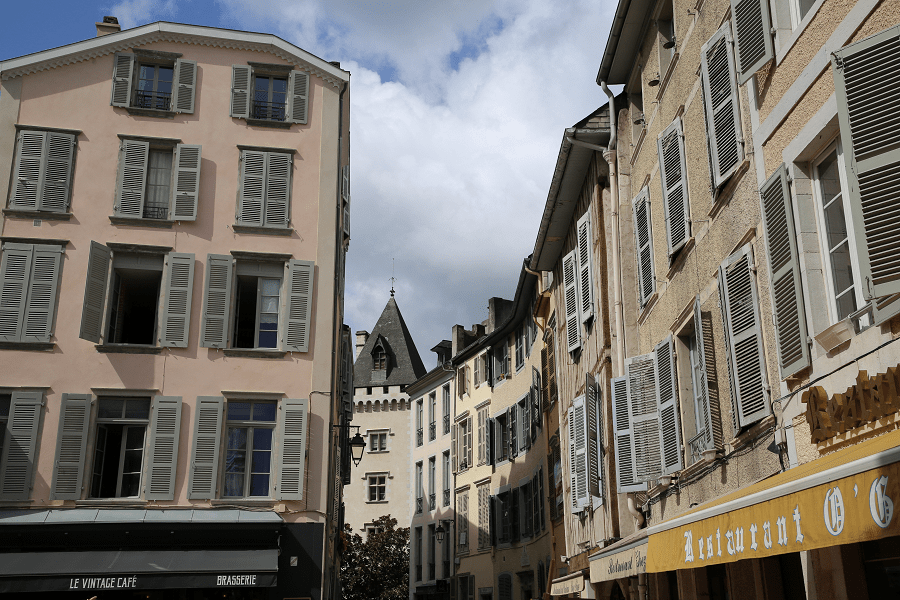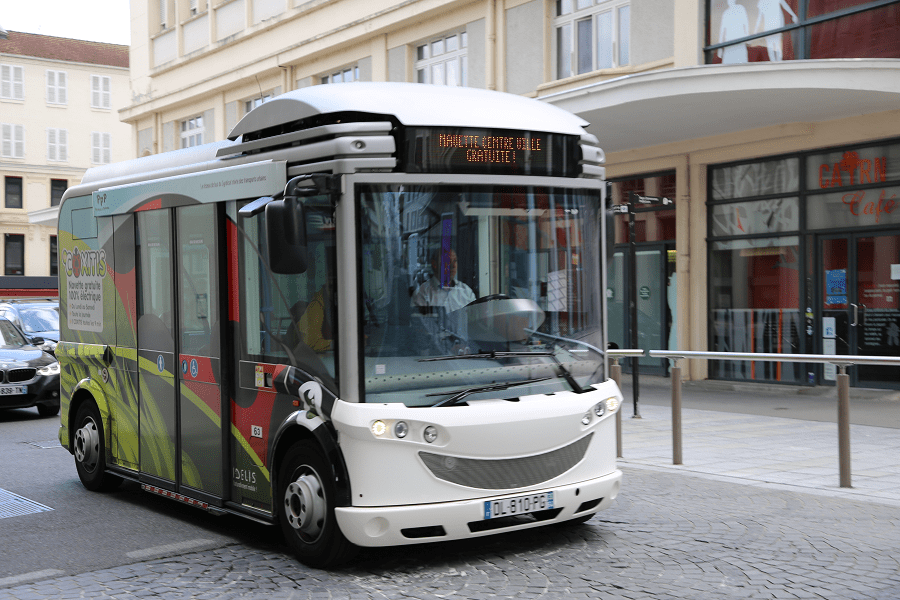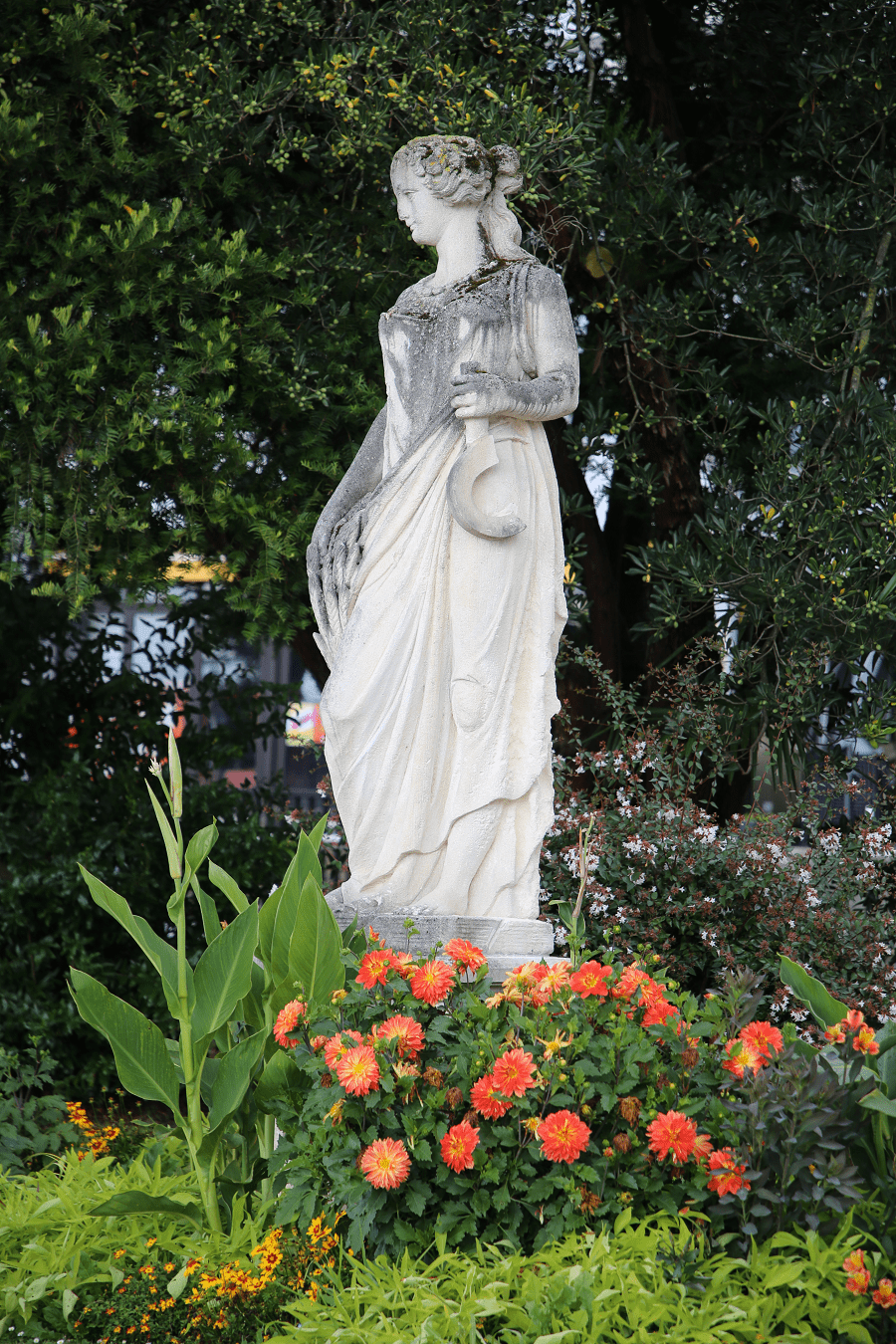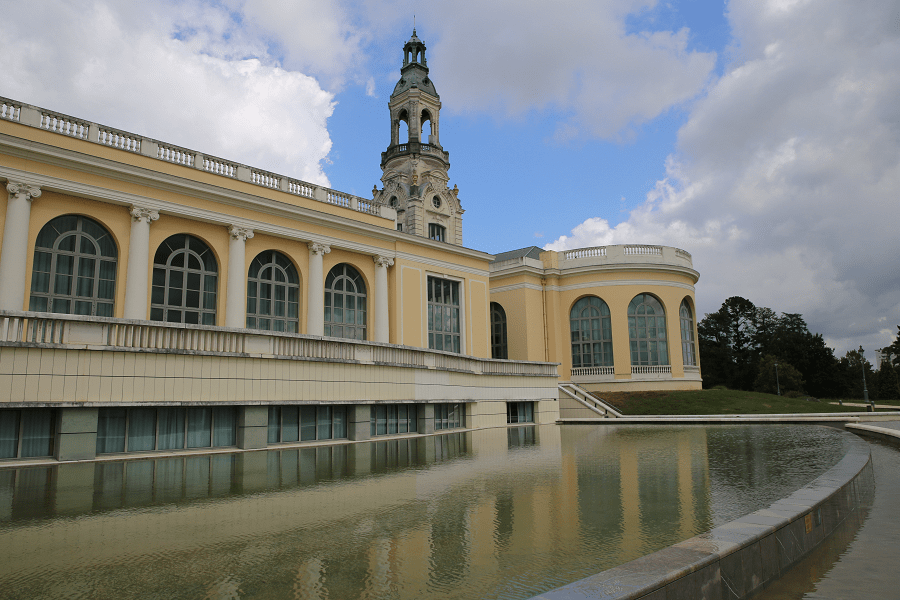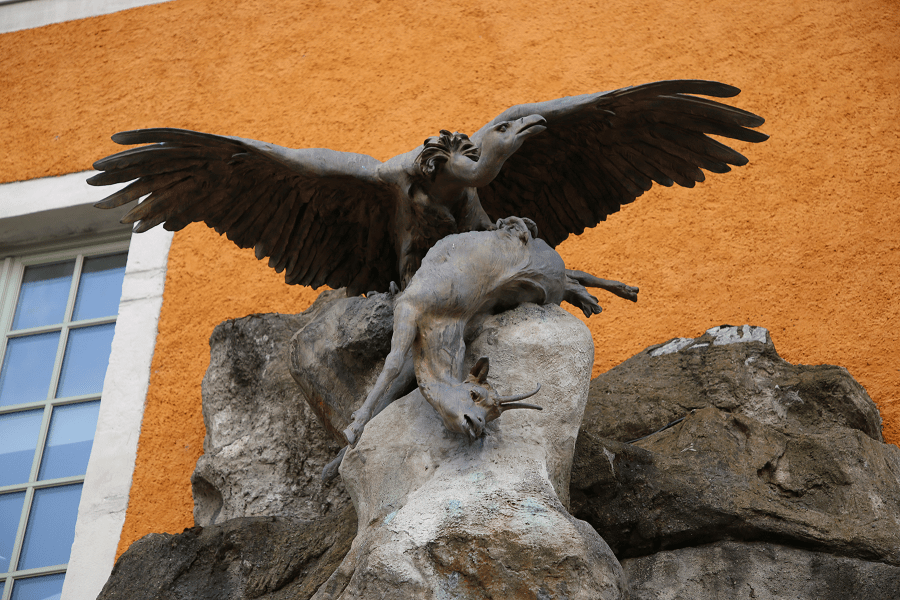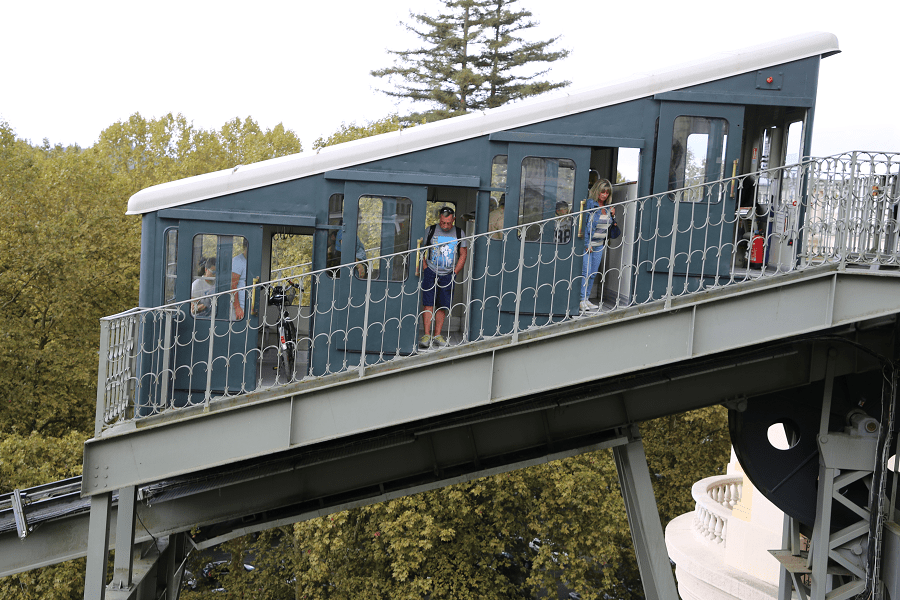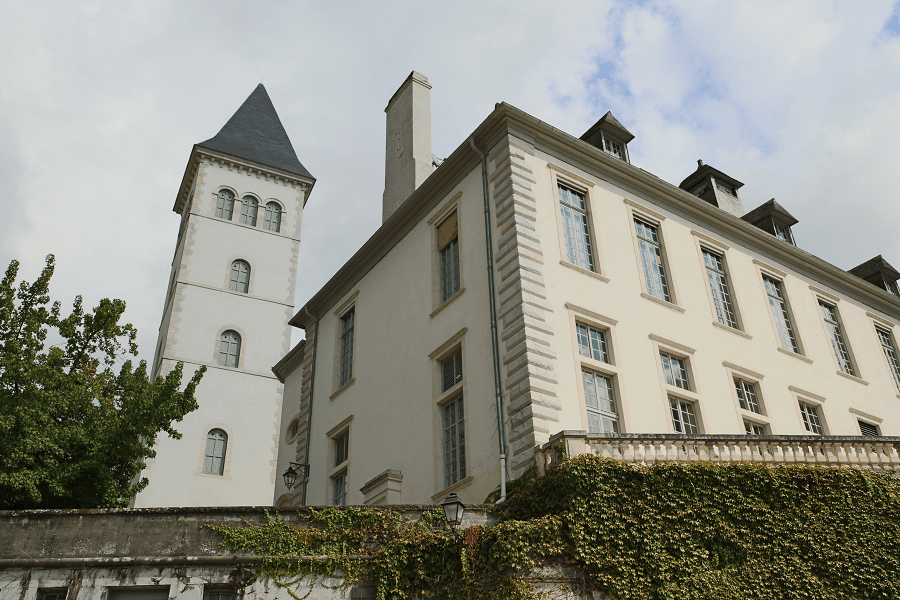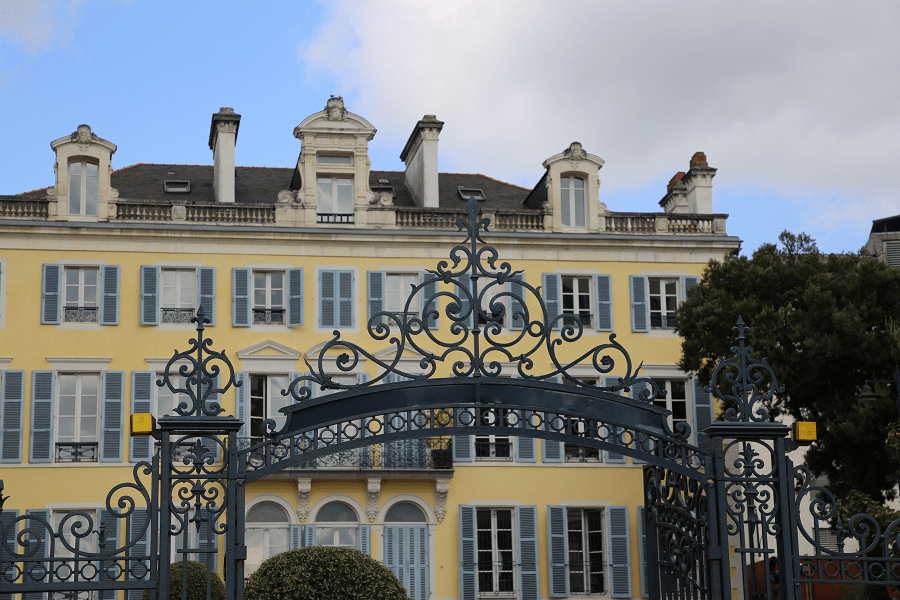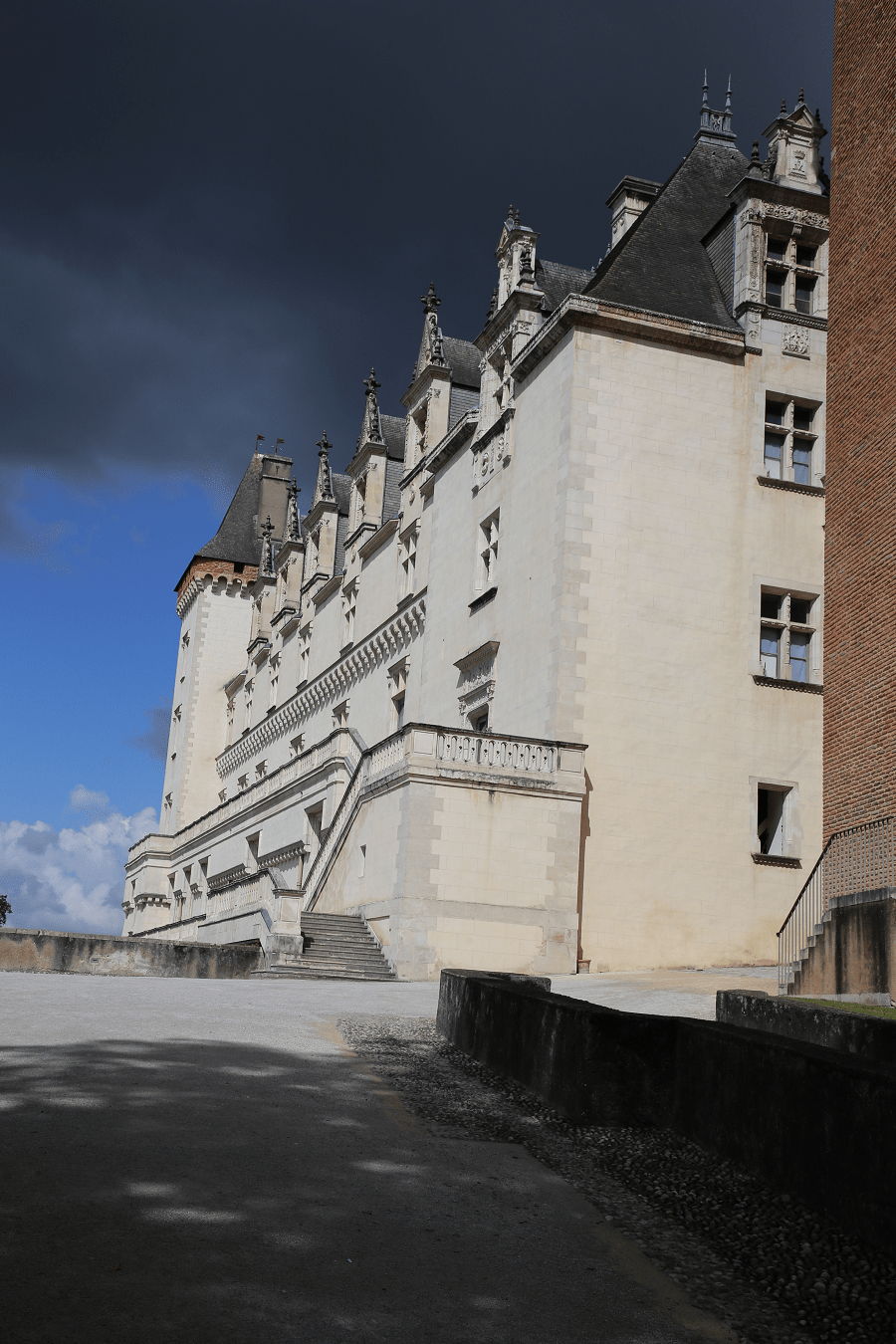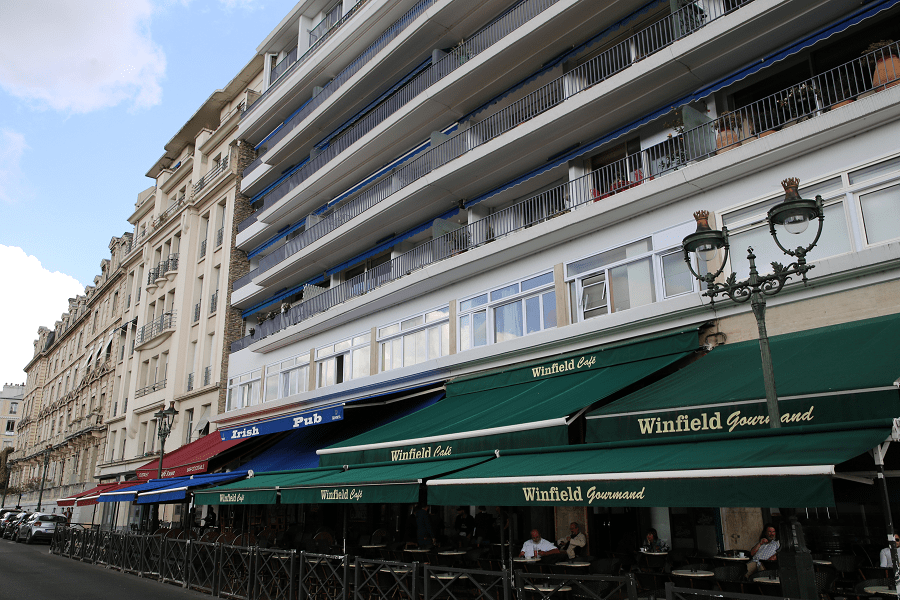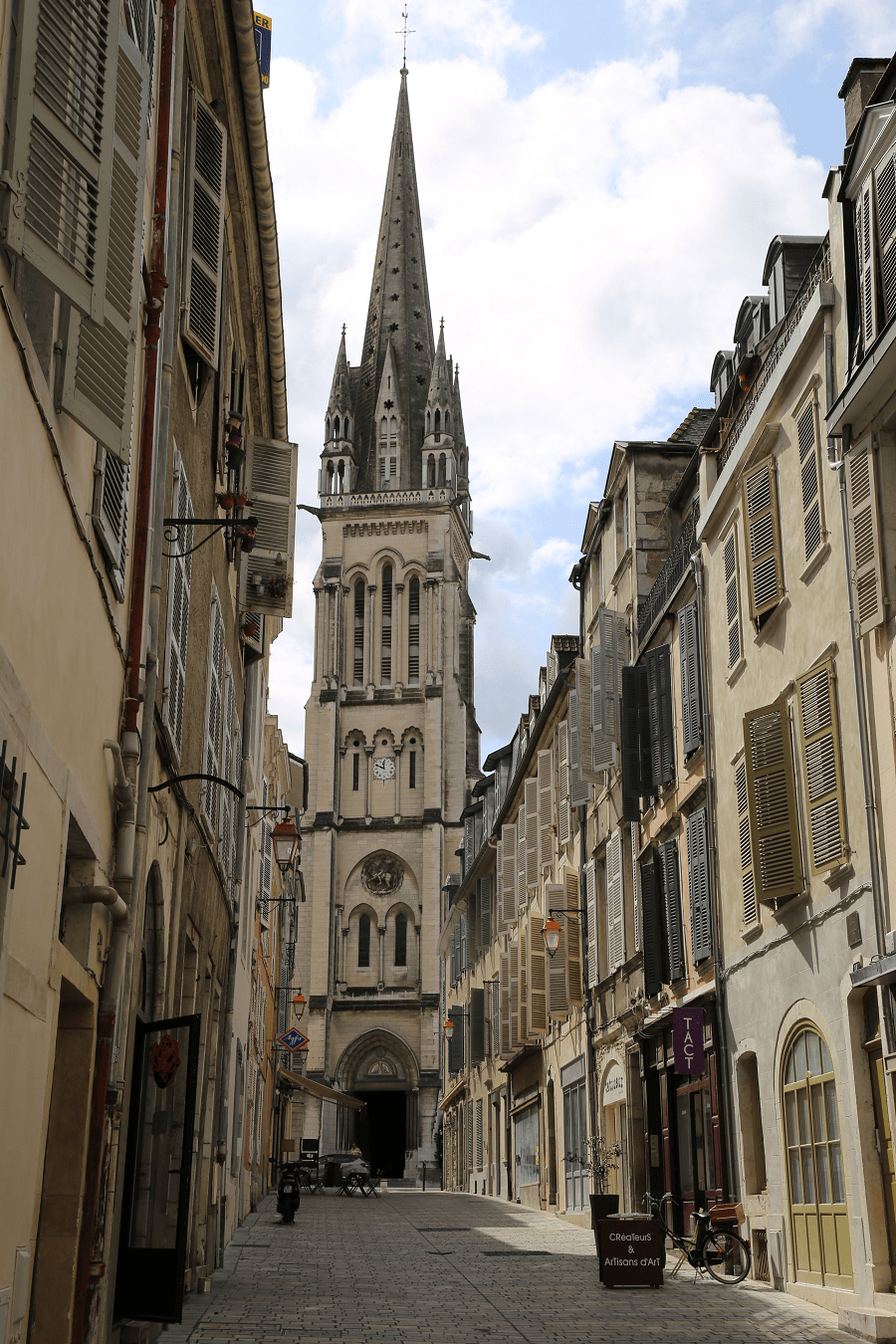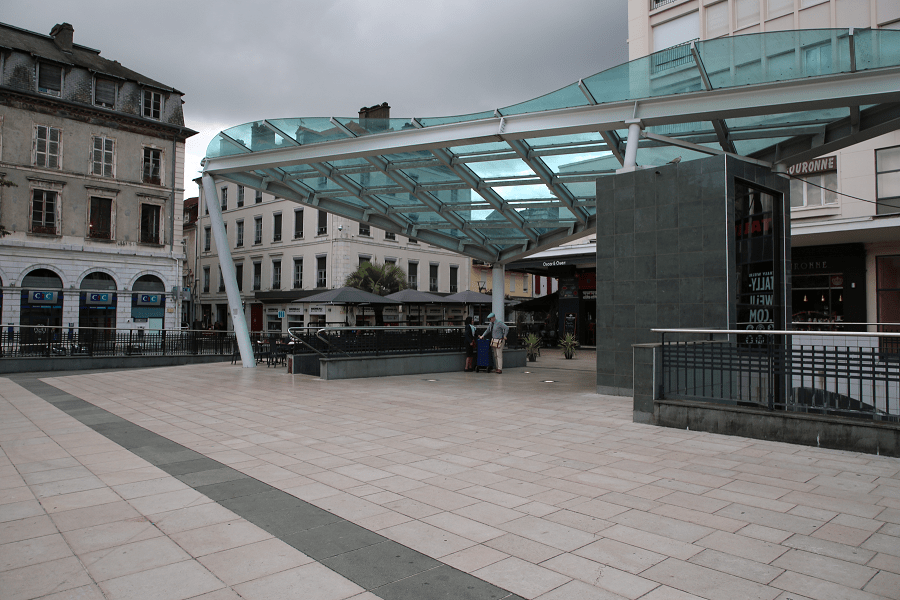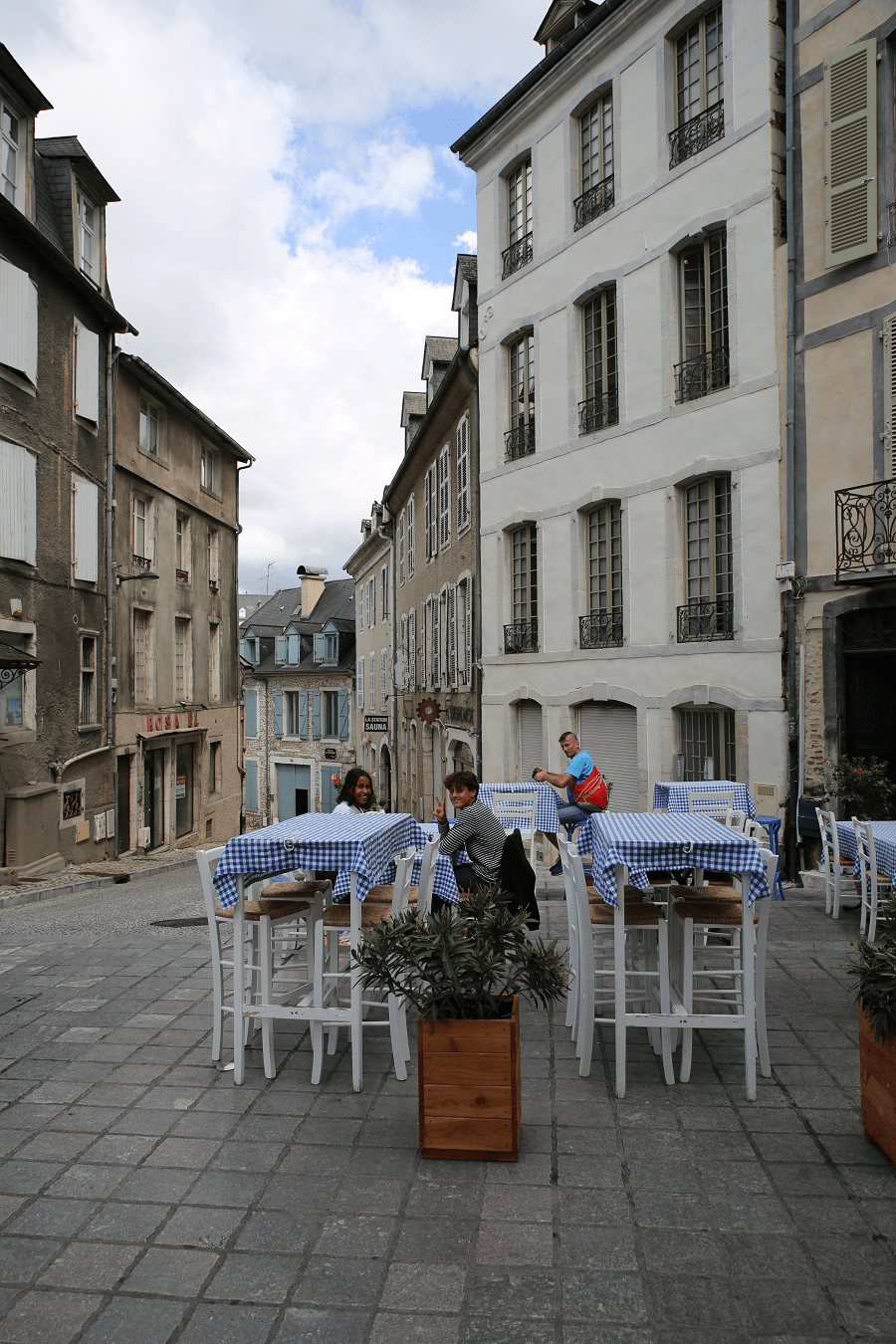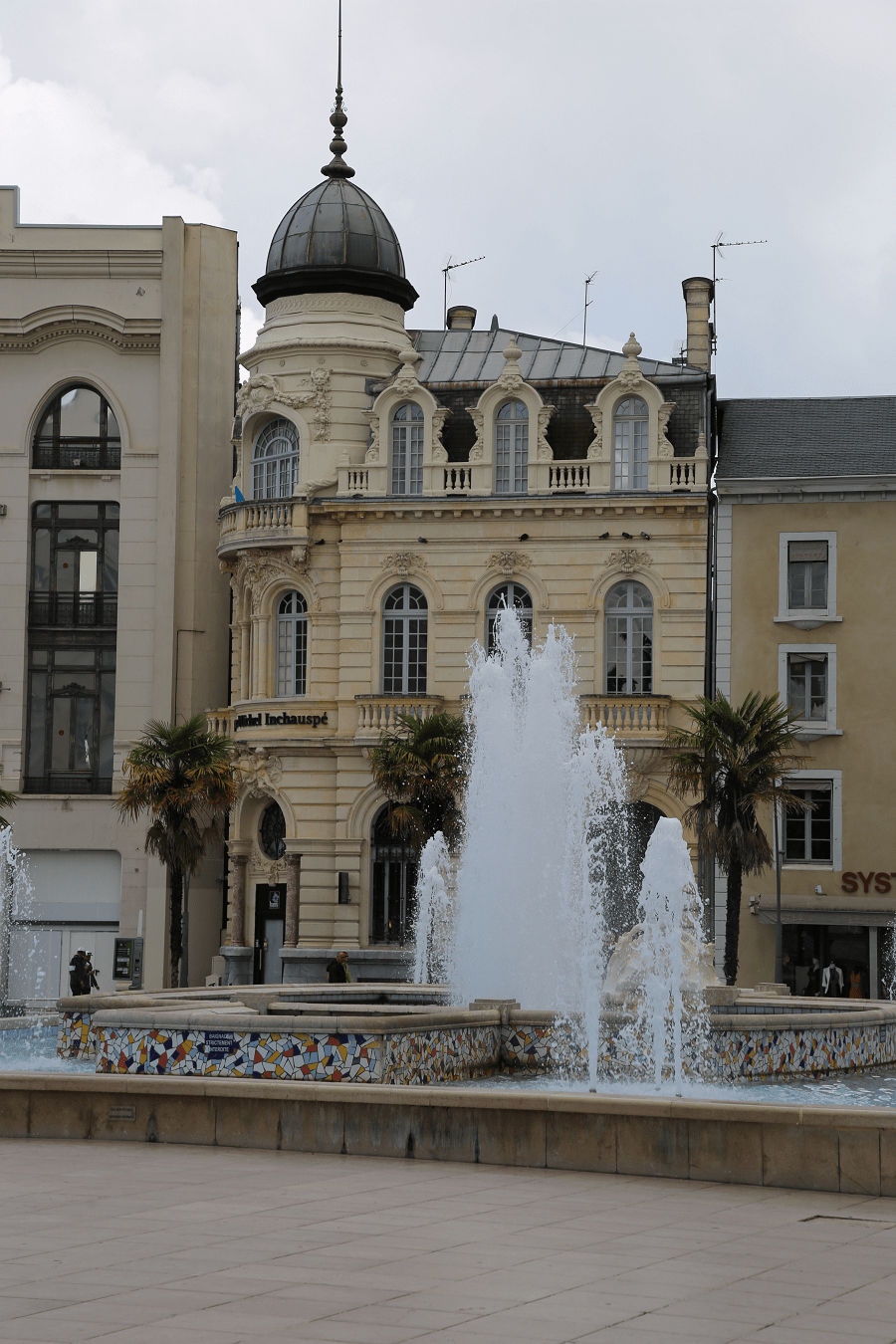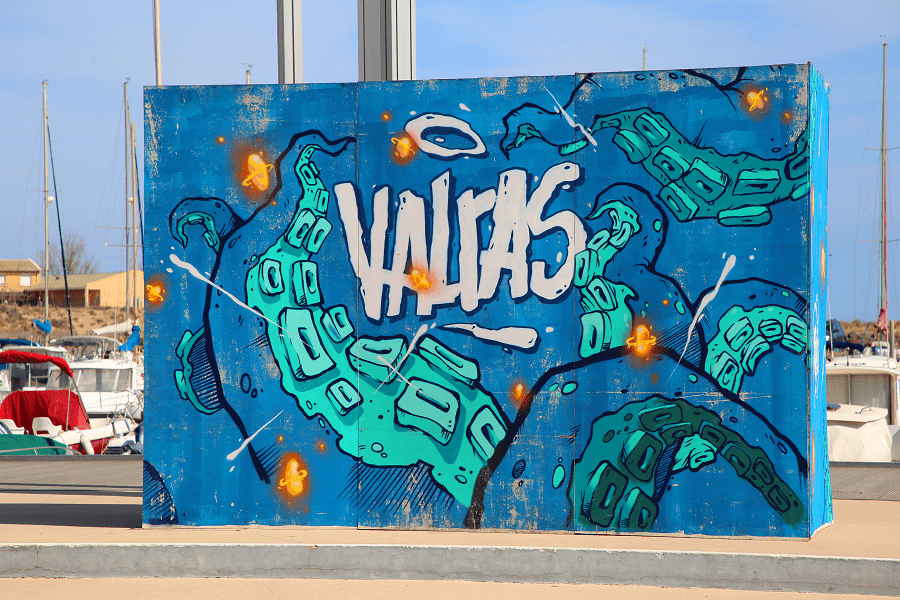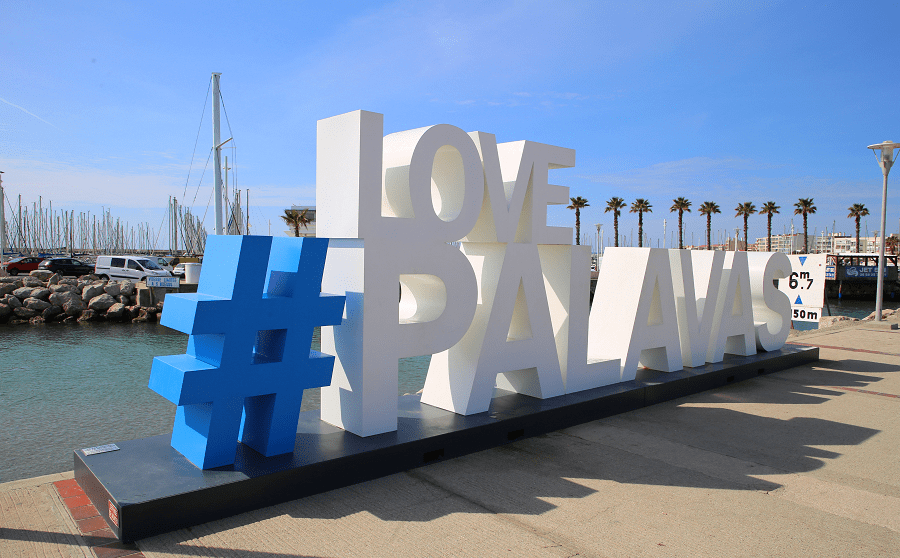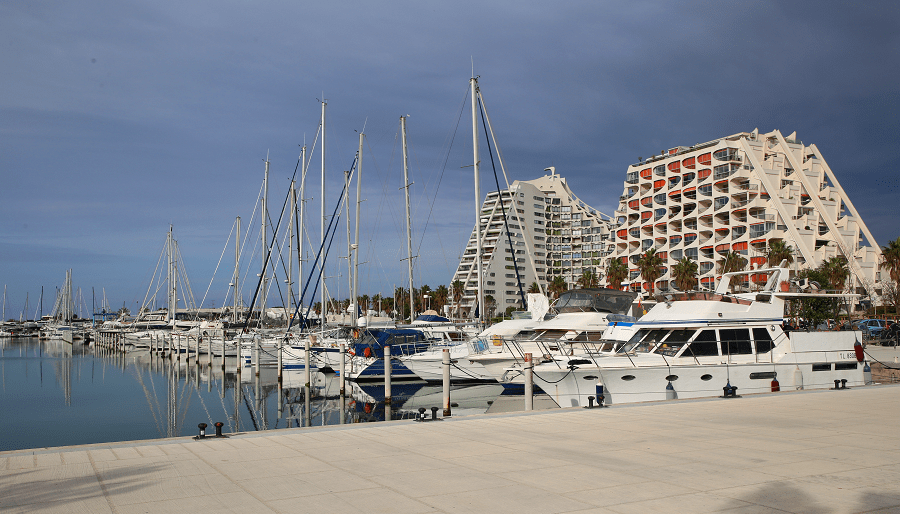Pau (fr. Pau) is a city and commune in southwestern France, the administrative center of the Atlantic Pyrenees department in the New Aquitaine region. Pau is a city with a rich history. It is called a city with a “magnificent terrace overlooking the Pyrenees” (fr. splendide terrasse sur les Pyrénées). It is one hundred kilometers from the Atlantic Ocean and fifty kilometers from Spain, and this position offers a wonderful panorama on the Pyrenees chain directly from the city center, from the Pyrenees Boulevard (fr. le boulevard des Pyrénées).
Pau is the capital of Bearn, the former sovereign principality, and it is the southern border of the historical region of France with an area of about 4,500 km².
Pau History
Archaeological evidence suggests that this place has been a habitat since the Gallo-Roman era. However, the first memories of Pau as a city date back to the 12th century, in connection with the castle construction, which became then a strategic point on the way to the Pyrenees.
There is a village around the castle built by the Lords of Bearn; it used its strategic position to protect the sovereigns of Bearn.
Viscount Gaston III (le Vicomte Gaston III) of Foix-Béarn made the castle both a fortress and one of his favorite places of residence later. He built a dungeon in the fortress southeast corner and a low tower protecting the castle southern facade also.
Gaston IV the Crusader (1436-1472) began work on transforming the ancient fortress into a princely residence and established his seneschal’s courtyard in Pau forever then. He created a weekly market in the city (on Mondays) at the same time; this tradition continued until the very beginning of the twentieth century. He organized three annual fairs also.
The castle and the village acquired a new meaning, becoming the residence of the kingdom of Navarre in the sixteenth century. Pau became the political and intellectual center under the rule of Henry and Marguerite of Navarre. A parliament began to assemble in the city, and they opened a Court of Audit in 1520.
There was a particular mark in the Pau history, their grandson’s birth, Henri de Bourbon, born December 13th, 1553 in the castle. Henry ascended the throne of France in 1589 under the name Henry IV (Henri IV). The city has been associated with this monarch since then.
Pau lost his influence and began to submit to the French crown in 1620, but before the revolution, it was able to maintain autonomy.
The construction of the Cordelier Monastery in northern Hédas in 1650 (now Place de la Libération) led to the construction of the first bridge.
The communication routes development continued in the eighteenth century. They built the Royal Bridge (today the bridge on July 14) between 1733 and 1739, which finally allowed the royal road from Bordeaux to Spain to cross the Gave de Pau River easily.
They opened new roads a little later in the direction of Bordeaux and Bayonne, crossing the old Navarra gardens, which blocked the city’s development previously.
The city, which was only a modest village at the end of the 17th century, deeply changed its face. So, abbot d’Espilly (l’abbé d’Expilly) in his “Dictionary” describes it as follows in 1768: “The city is not old and not big, well built up and very pleasant due to the beauty of nature and mild climate.”
They chose Pau in 1790 as the residence of the main judicial and administrative organs of the new Lower Pyrenees (Basses-Pyrénées) department. The castle remained the national property, but they redistributed the park’s vast territory. They opened a livestock market in Pau In 1795.
Another famous man was born in Pau in the eighteenth century, Jean-Baptiste Bernadotte, the future Marshall of the Empire (maréchal d’Empire), and the King of Sweden and Norway (from 1818 until his death in 1844). They built Bernadotte barracks (1825-1830) on the former royal gardens site, where the national archive of the French ground forces is currently located. Many Swedish tourists visit the Bernadotte house; where his museum lies.
The Beautiful Epoch (Belle Epoque) is the period between the last decades of the 19th century and 1914 (for France it is the first decades of the Third Republic); it marks a new boom for Pau due to the flow of rich foreign tourists (British, Russian, Spanish and, American). They came here to spend the winter and enjoy the benefits of Pau climate described by Scottish doctor Alexander Taylor.
They built many villas and palaces in Pau during this period, as well as “all the elements of modernity” necessary for comfort: baths, a casino, a funicular (today it provides transport links between the railway station below and the historic city center above. It started the operation in 1908).
Pau then became one of the world capitals of developing aeronautics under the influence of the Wright brothers, who founded the first flight school in the world there.
Pau’s economy focuses on the aircraft industry with the end of spa tourism in the twentieth century, also in the petrochemical industry in connection with the Lacq gas field discovery in 1951.
Pau is a city with a population of more than 80 thousand people and an agglomeration center with a population of about 200,000 people in 2019. The city also plays the role of a culture and sports capital.
Pau Heritage allowed the city to earn the City and Country of Art and History title (Villes et Pays d’art et d’histoire); this title was awarded to it in 2011.
Tourism, architecture, and attractions
The city center border is Boulevard d’Alsace-Lorraine in the north, Edward VII Avenue (l’avenue Édouard-VII) in the east, and Étigny Street in the south. Pau consists of several districts: the Castle district (le quartier du château), the Heda district (le quartier du Hédas), the Desal district (quartier des Halles), the Triangle (le Triangle), and the Paul Doumer city (la cité Paul-Doumer).
Pau Castle rises above the river. It’s two most ancient towers were built in the 12th century. The castle was turned into a Renaissance palace at the request of Marguerite of Angouleme (Marguerite of Navarre, Marguerite de Navarre, French princess, sister of King Francis I, one of the first women writers in France).
The so-called Parliament of Navarra is not far from the castle; its location is in the former palace of justice built on the site of the Bishop de Lescar house in 1585. The building burned down in 1716, after which they rebuilt it. The General Council is here now.
Interesting fact: gardens and parks occupy more than 750 hectares of urban territory.
Beaumont Palace (fr. Palais Beaumont) is the second, but no less significant, sight in the Pau center.
July 14th District (XIV-Juillet)
This is the Pau quarter, located on the left bank of the Gave de Pau River. The Gave left bank urbanization began in 1740 with the completion of the Royal Bridge (the current bridge on July XIV) construction. The Pau municipality planned to annex this area in 1794 but implemented its plan only on July 2nd, 1862. This area developed rapidly during the 19th century; mills, sawmills, tanneries, slaughterhouses, and soap factories appeared here.
The district underwent many changes in the 1970s due to the closure of factories and the residents’ impoverishment because of the competition from peripheral outlets.
Dufau-Tourasse Quarter
The quarter includes several large residential complexes, including the Carlitos residence, as well as the city’s administrative buildings. Northeast Poe did not pose any obstacles to its urbanization, so Léon Jaussel determined the city plan in 1928. This plan aims to create a green city.
Dufau-Tourasse is the largest apartment buildings’ residential area built in the 1960s. Here lay the Saint-Pierre Church and the Jean-Sarrailh School.
South Quarter (Pau Sud)
The presence of suburban villas built during the great period of international tourism in Pau particularly mark this area. It also offers a wonderful view of the Pyrenees.
“Le Hameau” Quarter
This is, first of all, the Jean-Féger Science and Technology Center of the Total company and the sports center with many fields, and the Le stade du Hameau stadium for playing rugby.
Ousse des Bois Quarter (Le quartier de l’Ousse des Bois)
This quarter is one of the largest in the city. They built it in the 1960s and designed originally to accommodate workers developing the Lac field. It has become one of the immigrant hubs since the 1970s: blacks, Portuguese, Spaniards.
North Quarter (Pau Nord)
This area also includes many large facilities such as a racetrack, campus, hospital, and a sports palace. There is the “royal forest” here with an area of 300 hectares. The ancient Cami Salle (“Salt Road”) crosses the plains; this is the historical route from the plateau de Ger to the Salies-de-Béarn, where salt deposits were developed.
Education
The city of Pau has a long academic tradition, as a university was established in Pau in 1722. Now, Pau is the second student city of Aquitaine. The city has 17,000 students and 3,900 researchers. It has a multidisciplinary university (law, economics, sciences, social sciences and humanities), an IUT [fr], an IAE [fr], several schools of engineers, business schools and art schools.
The University of Pau and Pays de l’Adour (UPPA) had 11,200 students, in May 2012, spread across five sites: Pau, Anglet, Bayonne, Mont-de-Marsan (Landes) and Tarbes (Hautes-Pyrénées). Its location exceeds the strict framework of the Academy of Bordeaux and overlaps somewhat with that of the Academy of Toulouse. The University of Pau and Pays de l’Adour had 25 laboratories and 650 researchers in 2007.
The university group and Pyrénées Oceanes Research Campus unites the Groupe ESC Pau, five schools of engineers (ENIT Tarbes, ENSGTI [fr], EISTI [fr], ESTIA [fr] Bidart-Bayonne, ISA BTP), the Institute of Business Administration [fr] (IAE) and the University of Pau and Pays de l’Adour (UPPA), with 15,000 students. The Pyrénées Oceanes Campus takes a European dimension and will soon join the University of Aragon, the University of Pamplona and several Spanish business and engineering schools. University President is Philippe Lafontaine, Director of the ESC Pau.
Sport
The city has regularly hosted the Pau Grand Prix since 1933. Racing cars of various categories, including Formula 1 cars, drove onto the track for 80 years.
Pau Section Paloise team is a three-time French rugby champion. One Tour de France stage route passed through the city in 2019.
Shopping
Shopping in Pau does not particularly represent. There are small souvenir shops, as well as clothing and shoe stores in the city center.
Pau Restaurants
Gourmet restaurants – L’Amateur de thés, Les Papilles Insolites, Le Majestic, Au fin Gourmet
Local restaurants – L’Opéra, Le Canard Royal, Côtes & Mer, Chez Olive
Tasty and inexpensive – L’Estanquet, La Fiancee du Desert, Creperie Aux Delices de Marie, Le garage
How to get there?
By car
Pau’s location is at the intersection of two motorways: A64 and E80. The nearest major cities are Tarbes (a 30-minute drive), Toulouse (a 2.5-hour drive), Bayonne and the Basque coast (just over an hour’s drive).
The A65-E7 motorway is the Gascogne motorway that connects Pau with Bordeaux (about two hours).
Distances by car:
From Biarritz: 1 h 26 min (125 km) via A64
From Dax (tolls): 1 h 17 min (91.3 km) via A64
From Nantes (tolls): 5 h 8 min (557 km) via A83, A10 and A65
From Bordeaux (tolls): 2 h 17 min (217 km) via A65
From Toulouse (tolls): 2 h 11 min (196 km) via A64
From Monaco (tolls): 7 h 14 min (772 km) via A8
From Nice (tolls): 7 h 6 min (750 km) via A8
From Marseille (tolls): 5 h 35 min (593 km) via A64
From Avignon (tolls): 4 h 54 min (520 km) via A9, A61 and A64
From Perpignan (tolls): 3 h 51 min (397 km) via A61 and A64
From Andorra (tolls): 4 h 3 min (304 km) via A64
By railroad
Pau station. High-speed trains TGV (Paris-Montparnasse-Tarbes line), Intercités (Hendaye-Toulouse-Matabiau line), and TER (Bordeaux-Saint-Jean-Tarbes line) arrive at the station.
By plane
Pau Pyrenees Airport, located 12 km from the Uzein commune, is directly connected to Paris-Charles-de-Gaulle and Paris-Orly airports (9 flights per day), as well as to Lyon, Marseille, and other European cities (it is the third in Aquitaine after the airports of Bordeaux and Biarritz by the passengers’ number).
Main information
Area: 31.4 sq. km
Coordinates: 43°18′N 0°22′W
Population: 81,190 (2019)
Languages: French
Currency: Euro
Visa: Schengen
Time: Central European UTC +1



